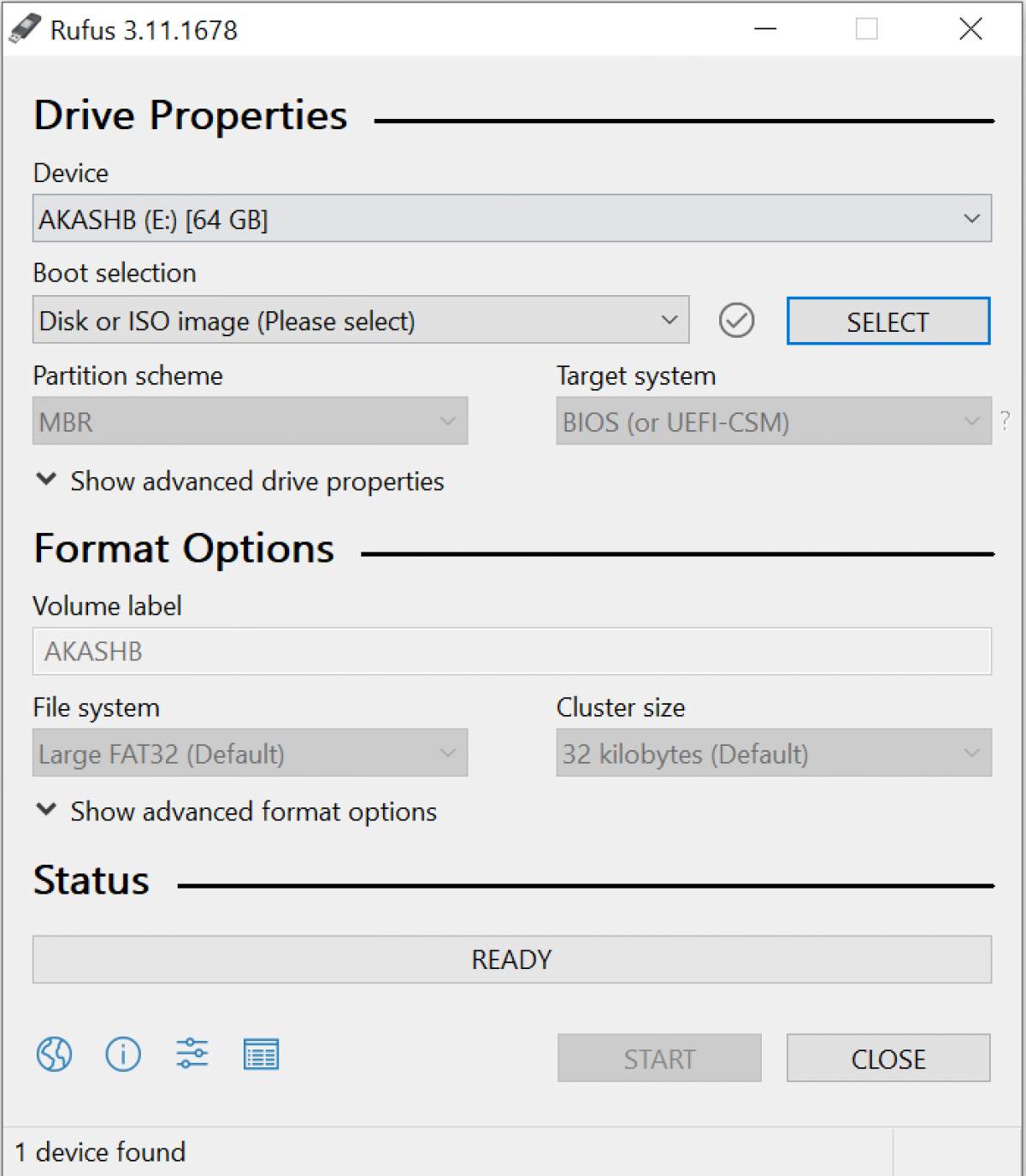
- #CREATE BOOTABLE USB WINDOWS 7 64 BIT INSTALL#
- #CREATE BOOTABLE USB WINDOWS 7 64 BIT UPDATE#
- #CREATE BOOTABLE USB WINDOWS 7 64 BIT MANUAL#
- #CREATE BOOTABLE USB WINDOWS 7 64 BIT ISO#
- #CREATE BOOTABLE USB WINDOWS 7 64 BIT WINDOWS 8#

Bootcode was successfully updated on all targeted volumes.” You should see a message saying “ Successfully updated NTFS filesystem bootcode.Assuming your USB stick drive letter is “E”, type the following command to make the USB stick bootable:.
#CREATE BOOTABLE USB WINDOWS 7 64 BIT ISO#
If you have a DVD, follow step 6.2:Ħ.1: Assuming you extracted the ISO to C:\Win7, bring up your Command Prompt again, then browse to the BOOT folder by typing: “ CD C:\Win7\boot”Ħ.2: Assuming your DVD drive letter is “D”, bring up Command Prompt and browse to the BOOT folder by typing “D:CD boot”.


#CREATE BOOTABLE USB WINDOWS 7 64 BIT INSTALL#
You should be able to get this from any 32-bit install source for Windows 8, Windows 7 or Vista. If you’re making the USB bootable media for a 64-bit version of Windows on a 32-bit version of Windows, you need to get yourself the 32-bit version of the BOOTSECT.EXE tool used in this guide, as the 64-bit version found included in the 64-bit source files won’t run on a 32-bit OS.
#CREATE BOOTABLE USB WINDOWS 7 64 BIT MANUAL#
(Tip: See your PC manual or a tech savvy friend if you have issues with this step. You would need to run the installation from your DVD-drive or obtain an external DVD-drive or adapter. If not, then you probably can’t boot from your USB media.

(Tip: Some USB drives don’t work well as boot devices on certain systems. A USB stick or similar USB storage device (aka” USB Flash Drive”) with a minimum of 3 GB capacity.
#CREATE BOOTABLE USB WINDOWS 7 64 BIT UPDATE#
CAP, before you can update to the absolutely latest BIOS version.įirst you need to fulfill the following list of prerequisites, which I have expanded on much more than most guides similar to this one, so that you will be prepared for everything: Read the notes carefully before updating your motherboard using these new BIOS versions, as the manufacturer may have special instructions for updating the motherboard to support a completely new BIOS file format known as.
#CREATE BOOTABLE USB WINDOWS 7 64 BIT WINDOWS 8#
Many motherboards have been getting new BIOS updates for Windows 8 optimization. Quick note for Windows 8: Please check for any new BIOS versions before installing. Once the process is done, you’re good to go!Ĭlick here to check the official USB/DVD Download Tool guide if you get stuck or have any issues downloading the tool. The tool will automatically format the USB stick you select to make it bootable, then extract the ISO-file you choose and copy the files onto the USB stick. Why? You can simply download the Windows 7 USB/DVD Download Tool from Microsoft and create a bootable USB to install your desired Microsoft Windows operating system.Ĭlick here to download the Windows USB/DVD Download Toolĭespite its name, this tool works with both Windows 7, Windows 8 and newer. You can now easily skip most of the steps further down in this guide. It’s simple to create a bootable USB to install newer Windows, Windows 8, Windows 7 or Vista as long as you follow this guide.


 0 kommentar(er)
0 kommentar(er)
